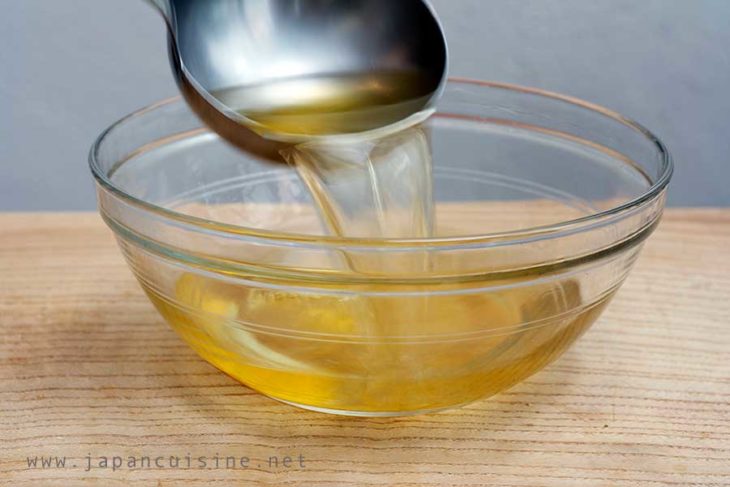
Dashi – 一番出し・Basic Stock
Here is the recipe for ichiban-dashi, the basic Japanese broth, the easiest to make. It will give a special touch to your preparations of traditional and homemade Japanese cuisine.
- Preparation time: 40′ (including kombu soaking time)
- Difficulty: easy
- Availability of ingredients: fairly available
- Alternative ingredients: no
- Vegetarian: no
- Gluten-free: yes
Ingredients
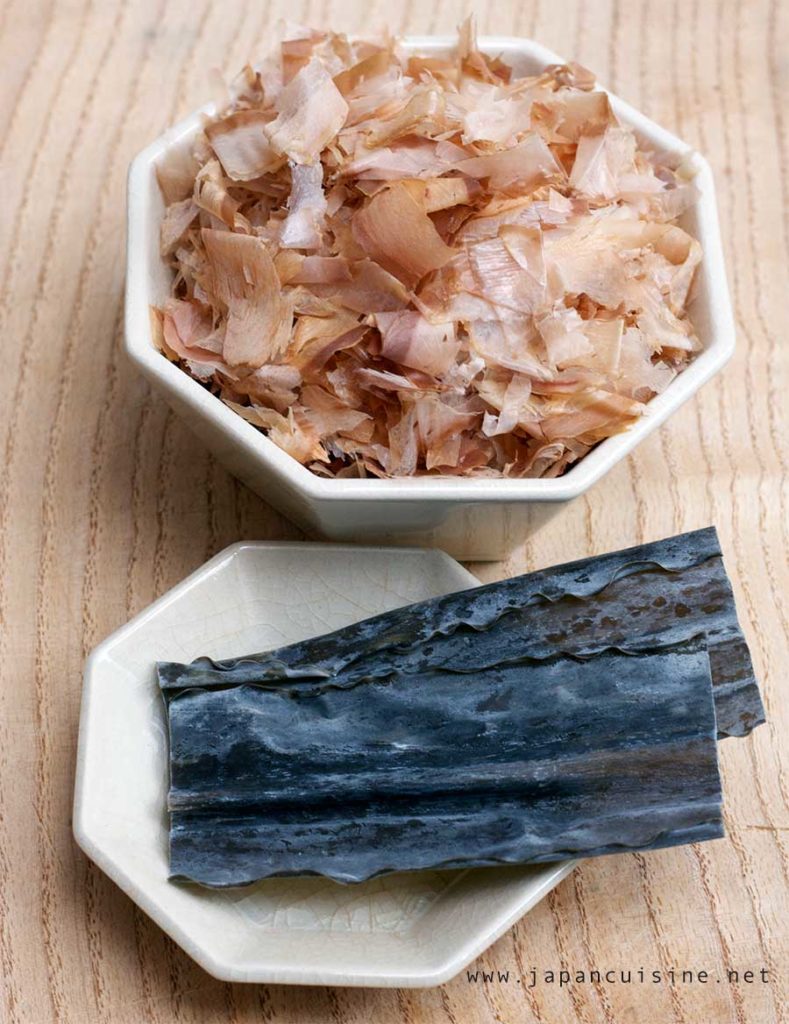
Ingredients
- Water: 500ml (2 cups)
- Katsuo: 15-20g (0.5-0.7 OZ)
Dry and smoked bonito flakes. The import of dry and smoked katsuo from Japan is prohibited in Europe. Since few years ago a Japanese entrepreneur has been producing it in Spain and can distribute it in the rest of the EU countries. You can find it in ethnic shops. - Kombu: 2 pieces of about 10 cm (4 In)
Kombu (saccharina japonica) is a ribbon-shaped seaweed, about ten centimetres wide and several metres long. It is dried and sold cut in various sizes. Thanks to the high content of glutamic acid, it gives the dishes the flavour that the Japanese call umami. You can find kombu in organic and macrobiotic shops.
Preparation
The preparation of Japanese dashi is very easy.
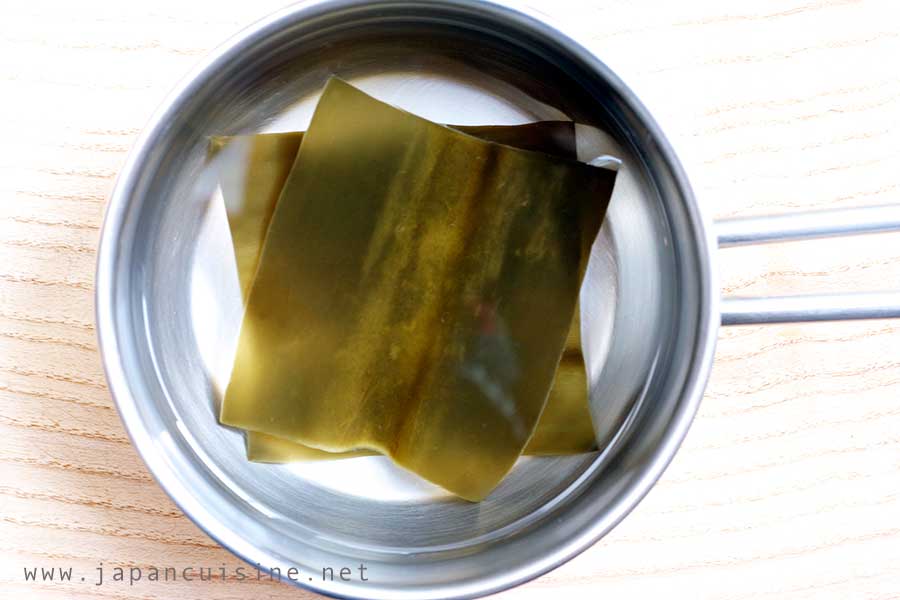
Wipe the kombu under cold water and rub it gently with a damp cloth to clean the salt residues that often cover it.
Put the water in a pot and leave the kombu for about half an hour.
Put the pot on the stove over medium heat. As the water heats up, the kombu stretches out and starts to release bubbles at its ends. Remove any foam that may form with a net.
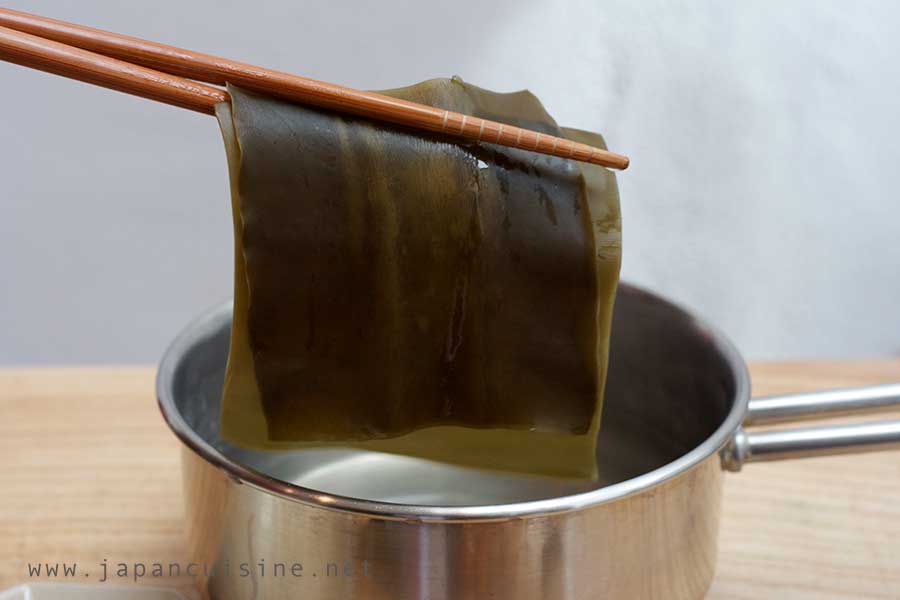
Just before the water starts boiling, remove the kombu.
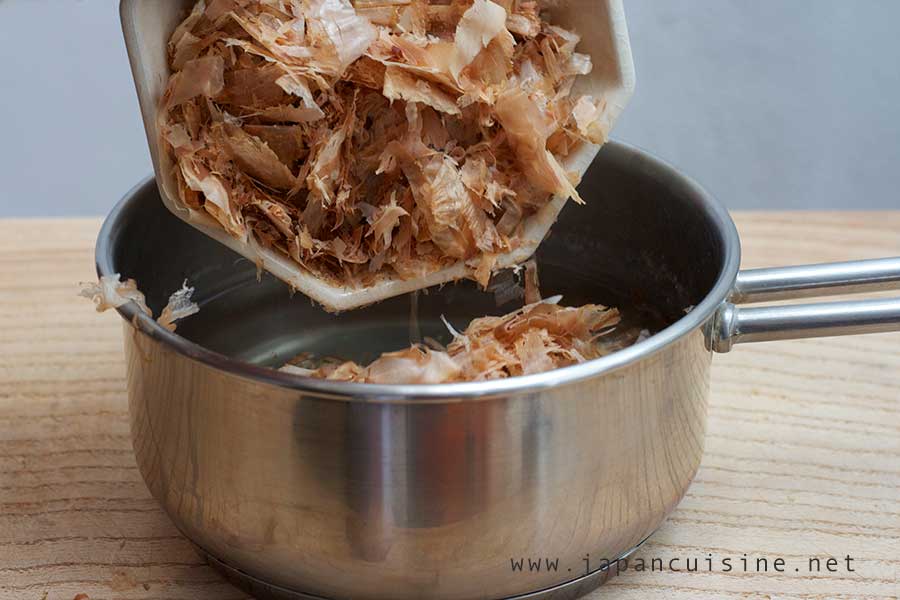
Turn off the flame and add the katsuo flakes.
It is important not to boil the katsuo otherwise you get a strong, bitter and unpleasant taste. The water temperature should be around 70° (158 F).
Count to 10 or wait for the katsuo flakes to settle on the bottom of the pot.
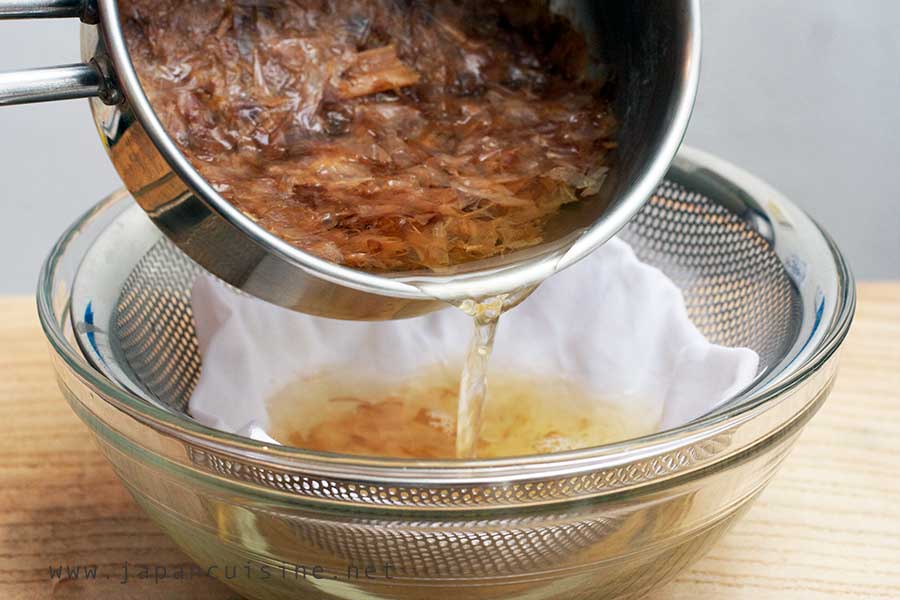
Filter the dashi with a strainer. The liquid should appear clear and limpid. The taste must be delicate and pleasantly savoury.
The dashi can be further filtered with absorbent paper or a gauze of food-safe fabric.
In a sealed container it can be stored in the refrigerator for a few days.
How to use dashi
Put a few tablespoons of dashi in the dough of okonomiyaki, takoyaki, chikuzeni or to prepare a chawan-mushi. You can use it, very hot, for soba, udon and other spaghetti in broth.
For the more creative, the characteristic flavor and softness of dashi can also give a special touch to many dishes of our cuisine, both fish and meat. Many famous chefs pride themselves on using it in their sophisticated recipes.
Instant Dashi
Just as you can find stock cubes, jellies and granular broths in your store, in Japan too, there are fewer and fewer people who prepare dashi at home. Most people nowadays use instant products instead. There are hundreds of them, of all types and for any recipe.
Below there are hilarious television commercials for instant dashi from a famous brand that aired in Japan about twenty years ago.
In a pot of hot water two famous Japanese comedians spray themselves with water dressed as kombu and katsuo. The music is that of a great success of the 80s: “Otoko to onna no love game” (男と女のラブゲーム). The lyrics have been changed from “otoko to onna” (a man and a woman) to “katsuo to kombu”.